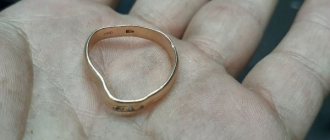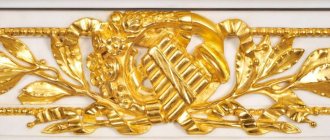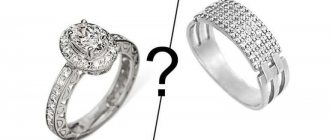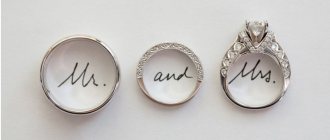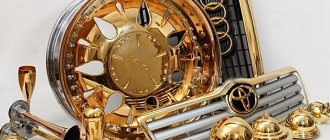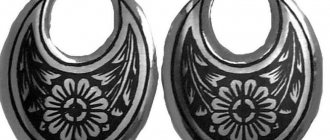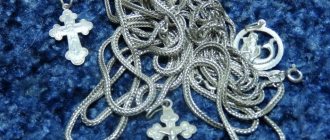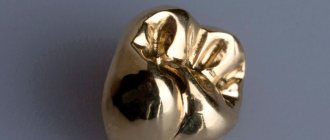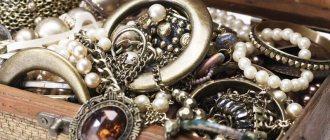Since ancient times, gold has always had the highest value. This precious metal acts not only as a guarantor of currency, but also as various types of jewelry that show the status of its owner.
That is why gold rings, chains, earrings, bracelets, etc. are the most luxurious and desirable gift. However, not many people think that gold can be used to create technology, in particular radio components.
This article will introduce you to such interesting information and answer the question: how to extract gold from radio components?
What parts contain gold?
Both silver and gold can be equally used to coat radio components. But despite the greater electrical conductivity of silver and the lower degree of electrical resistance of silver, manufacturers prefer gold. This is due to the fact that this precious metal oxidizes much more slowly, which allows the parts to serve for many years.
Foreign manufacturers also use gold to coat microcircuits, but if you are wondering about this, the answer is that in domestic technology you can get much more gold from radio components.
It is worth noting here that a higher percentage of gold content is found in Soviet-made radio components. Surely you have old parts lying around in the basement, attic or mezzanine that you always felt a pity to throw away. This is where they come in handy.
So, in Soviet electronics: televisions, tape recorders, radios, almost all radio components contained gold in one way or another. What parts are gold plated and where can I get them?
- Transistors whose gold content is located under the crystal and conductor, sometimes on the legs. Basically, these are transistors of the KT series (101,103, 117, 603, 613, etc.).
- Gold can also be mined from microcircuits, because... the precious metal was deposited by galvanic means, i.e. coating one metal with another through the action of electric current.
- Connectors made during the Soviet period are also coated with a layer of gold several microns thick.
- Radio tubes, in addition to gold, they may also contain silver, platinum, tantalum (models: 12P17L, 6V1P, 6Zh1P-EV, GMI-11, etc.) A more detailed description of radio tubes can be found in specialized literature. One cannot help but mention the radio tubes of the GMI series; in some models the weight of pure gold can reach 16 grams.
- In semiconductors, in particular, in D-series diodes, LEDs, zener diodes, thyristors, etc. there is gold in small quantities.
- Capacitors contain the largest amount of gold, but only those that were used only for the construction of military equipment, and of the old type.
- Microparticles of gold are also contained in modern parts, for example, in SIM cards.
- In the manufacture of metal wristwatches in the USSR, the precious metal acted as a coating for the case.
- Computer parts also consist of gold elements: processors, connectors on motherboards, etc. It is important to know that gold extraction will be successful if the computer is “older”, because it contains more precious metal.
The need to remove gilding from gold-plated objects or products arises very often. This happens when the gilding is bad or it is necessary to remove a layer of gold from a gold-plated object. The process of removing gold plating is easily accelerated by chemical or electrolytic methods. Just remember that on gold-plated objects that are covered with varnish, you should first remove the varnish and only then remove the layer of gold. The varnish can be removed with alcohol, acetone or ether.
Rice. - gilding in hand; Network fingerprint or small iron. The means of achieving this result is to hold the handle of the iron as far as possible with the fingers that surround it on one side, squeezing it, placing the first knuckle of the thumb on top. In this position the handle is somehow formed in the fingers of the half-open hand, the thumb passing through and leaving the wrist free to bear the imprint of the iron, which must be gilded.
But in order to obtain the impression of any iron, it must be heated more or less according to the circumstances; this is, in a sense, a stumbling block in the trade. This science can only be acquired by practice; Repeated attempts in themselves can establish a rule in regard to leathers of all types and fabrics on which the guilder is called upon to practice his art. It is also and primarily for this reason that it is necessary to carry out tests on leather debris, etc.
Chemical method of removing gold plating
To remove gilding, the product or object is dipped into a special mixture, which consists of 1000 grams of sulfuric acid and 250 grams of hydrochloric acid, with a little nitric acid added to this mixture. Having pulled the products out of the solution, they are carefully examined; if the gold has not completely dissolved, then add more nitric acid and repeat the procedure. In addition to preserving the acid solution, you should also deal with the wash water, since gold also settles in it. To isolate gold, the acid must be evaporated in a porcelain bowl using a water bath. This must be done until a syrupy consistency is obtained, until the sulfuric acid begins to emit white smoke. The same must be done with the rinsing water. After the evaporation procedure, a solution of ferrous sulfate - ferrous sulfate - is added to the resulting mass. It, oxidized with hydrochloric acid, will begin to release a dark-colored gold precipitate. The precipitate must be washed with water, filtered again and, after drying, fused. This procedure is labor-intensive and in this regard it is much better to use the electrolytic method.
Electrolytic method of gold plating removal
To do this, you need to make a bath consisting of 50 grams of potassium cyanide and one liter of water.
The cleaned products are suspended from the positive anode and lowered into this bath. The bathtub container should be made of porcelain or glass. For negative electrodes (cathodes) silver or iron plates are used. When the direct current is turned on, the gold layer from the objects begins to dissolve, and pure gold partially remains on the cathode. The voltage is regulated within 12-15 volts. The gold will settle on the cathode in the form of a film and will eventually need to be scraped off. Excellent results are obtained when concentrated sulfuric acid is used as the electrolyte and a lead plate serves as the anode, but here the voltage must be strictly 34 volts. Sent April 25, 2012 — 20:58
It is not enough to place the iron in contact with the fire, it must be observed. The careful and intelligent practitioner strives to heat his irons to such a degree that he gradually succeeds in suppressing the bath of water in which the true giver never immerses his irons for important reasons. Contact with boiling water gnaws and damages engravings; It also turns off and steam is generated in the recesses, which is very detrimental to the beauty of the gold plated. The iron is dirty, it needs to be rubbed with energy onto a piece of leather to make it shine; Consequently, rapid wear of thin parts of the engraving; In addition, it often happens that a caloric reaction is formed on the gland, the temperature of which is regulated on the surface, which is very dangerous for the operation.
and separate and deposit the metal. Interested in theory.
Alexii
Sent April 25, 2012 — 21:33
I think we sorted out the gilding itself,
How can you remove the gilding from gold plated items? In the sense of not just cleaning the product, but separating and depositing the metal. Interested in theory. It seems that nitrogen should handle this.
It is believed that it developed it, and the next moment the heat, pushed back into the thickness of the stem, is thrown to the surface, and one is surprised that he pushed the iron hard, well overheat, since it is necessary to extinguish? The best way to realize the warmth of the iron that is to be gilded is by touching the stem close to the engraving with your fingertip. The drop of water that settles there, bubbles and curls, comes into more or less contact with the hot iron and indicates, according to experience, the degree necessary for the operation.
The student, having acquired the concepts indispensable for cold imprinting the various types and sizes of irons, will follow the same path to attempt to imprint them in gold. For this, it is good to help him by first gluing the leather scraps on cardboard or cardboard using paste glue, the same English or French canvases that are applied to clear strong glue. Everything is well dried and cooked with egg white, etc. And then coated with gold or silver in sheets according to the above formulas regarding the kinds of irons to be printed, One of them, and putting heat on the place and rubbing the engraving on dry leather to remove the fog or dirt that is always deposited in it place, the calorie is used, it fits well with a plumb line to the edge of the Table.
I think the word “products” means microcircuits and gold-plated contacts? So the Azat woman can easily cope with this matter. Only the “high cork” will not work, you will still need to refine it.
Alexii
Posted April 25, 2012 — 10:41 p.m.
Sorry for the mistakes, you can't eat and write at the same time. You can dissolve the top layer (gilding) in aqua regia, and remove the product itself in time to avoid unnecessary sediment, then isolate the AI from it. You can also dissolve the base in nitrogen, carefully rinse the precipitate and remove the gold plating (if the base is made of soft metal).
He then grasps the iron, as we have indicated above, with his right hand and presents it above the indicated place, using his left hand, with which he presses the nail of his thumb Against the hot iron, with the sole purpose of guiding the latter until it touches the skin. The operator, when pressed, tilts the iron slightly to the right and, methodically, prints a slight swing from bottom to top and top to bottom, starting from the right side and ending on the left side.
We're talking light and methodical influence, enough to move barely noticeable for small size irons; They are emphasized more or less not only because of their proportions, but also in relation to the full and subtle features of the drawing. The ends are pressed as little as possible. Rice. - gilding in hand; Iron imprint using shoulder.
Pochinix™
Posted April 26, 2012 — 04:31
As for me, I myself do not mess with gilded silver. If there is a lot of it, then at the refinery I receive both gold and silver in pure form or in the form of silver chloride. In small quantities, I don’t take it. As for radio components. If there are a lot of them, then I put them in nitrogen, then I filter them, then I melt them and clean them. If in contacts, then again to the refinery. First, I melt it into one piece in an old crucible and hand it over as casting waste; otherwise they won’t accept it, because The special registration card does not indicate manipulations with radio components. If there are antique wedding rings with a silver base, then mechanically, carefully removing the gold foil.
And fine parts of the engraving, but the pressure increases on the solid body, giving them strength and shine. Since the surface of any iron to be gilded is more or less convex due to its dimensions, so that it can be impressed by hand, it is important to regulate the movements so that the keys, necessarily repeated, have a place without any deviation, on pain of duplication imprint. It has merit only insofar as it presents itself with a clear and unobtrusive view.
It is all the more important to practice, through methodical movements, the production of clear impressions, which sometimes do not arise at the first blow. It is therefore necessary to make them suitable for their renewal, and even if one wants to give the tone and shine of gilding, it is advisable to press the irons again. The operation is stopped, the excess gold, which is made to fall into the bell or container, is removed with the help of a small soft brush or a hare's foot; Then, with a cloth, it was also used to collect waste gold and finally wiped with a cotton wool pad.
This has never happened, and here it is again.. (Chernomyrdin V.S.)
Vasya Kurolesov.
POCHINIX is a fictional Gaul who lived at the same time as Asterix and Obelix. He was engaged in repairing various types of mechanisms. One of my clients called me that.
Pochinix™
Sent 03 March 2013 — 19:26
I have been to the radio electronics processing plant many times. I take waste there for refining. Recycling of radio electronics is an interesting thing. In my imagination, it was that some uncle Fyodor was sitting with a soldering iron and soldering radio components, then they were dismantled into chemistry. But when I saw how they do it on an industrial scale, I was a little taken aback. Everything is disassembled manually down to the board (for example, a motherboard without coolers). Then all these boards, tens of kilograms, are loaded into a huge crusher. The size of a combine harvester. And at the end, the fragments are no bigger than a bean. Then all this crap is boiled in containers, something somehow separates, something precipitates. I was not given any details. Here the output is metal granules. So they go to the galvanic shop. And OKSPAKHA didn’t let me in there. They don’t bring anything to this plant, PC seeds (although when I saw a mountain the size of a KAMAZ, system units and monitors, the toad really suffocated. There were quite modern specimens there. I decided that Sberbank had updated, or the tax office, or the pension ) Entire cabinets and racks from communication centers and enterprises, and warriors with trucks.
If, however, some pieces of gold were resistant to these abrasions, natural resin could be used to improve purity. We say it's good to stamp the irons a second time to add shine to the gilding. Regardless of the second print, and when it comes to artwork, we always go twice to complete the gilding. The first operation was successful and the gold came out, the gold parts being washed either with a small clean sponge or with a pad of cotton wool saturated with a little vinegar until all traces of the whites had disappeared.
This has never happened, and here it is again.. (Chernomyrdin V.S.)
What I like about black swans is their red nose. Vasya Kurolesov.
Auto
Jewelry
Banks
"Royal vodka" as a way to extract gold from radio components
Gold in radio components is not contained in its pure form, but along with many other metals and alloys. Therefore, the first priority is to separate the necessary metal from the unnecessary ones. There are several methods for this, some can be used to extract gold from radio components at home, however, it is worth remembering that this is a very labor-intensive and hazardous process.
The most popular method for extracting precious metal from various radio components is the use of “aqua regia”. This is a mixture of nitric and hydrochloric acids in a ratio of 3 to 1. The formula for “aqua regia” is: HNO3+3HCL=CL2+NOCL+2H2O.
This amazing acid can corrode metals, so you need to act extremely carefully and think through all the outcomes of the experiment in advance. All utensils used in this case must be glass.
Read also: Cupronickel message on chemistry
The resulting liquid must be heated on an electric stove with radio components immersed in it, previously cleaned of unnecessary plastic and contaminants. For 1 gram of metal you need 3 ml of aqua regia. When heated, the metals will begin to dissolve, and the liquid itself will turn bright green due to the remaining metals dissolved in it.
Then the second process begins - the extraction of gold, which has dissolved in the “regia vodka”. Here you will need hydroquinone - 0.5%, which is mixed with water - 5 g. per 100 ml. The resulting liquid is carefully added dropwise to the acid - 1 ml. solution per 100 ml. acids. You need to carefully stir everything and leave it to brew for 3-4 hours.
The resulting powder needs to be smelted into an ingot using no tricky techniques. This can be done using a heating crucible and borax, which saves the metal from the oxide film.
Service life of gilding on products
Not only women, but also men love gold jewelry. But not everyone can afford to purchase a product made of pure gold. For such people, there are other jewelry that is less expensive. They are made of silver, but the gilding used for coating makes the product visually similar to gold.
If such jewelry is not examined in detail, it can easily be mistaken for real gold. A counterfeit can only be detected by cutting or using special chemical reagents. This is convenient for clients, but is it worth saving without knowing how long such decoration will last and whether it will lose its appearance over time?
Gold-plated products are in great demand due to their affordable price and visual resemblance to real gold. But if the wearing rules are not followed, the gilding can quickly wear out and will have to be restored.
Gold plated item
The service life of gilding directly depends on the owner - on how he will wear his jewelry and monitor its condition. There are several simple rules, the observance of which will allow you to preserve the gilding on jewelry for a long period of time:
- You should not sleep with gold-plated items on; before going to bed, it is better to remove them and put them in a box or on the nightstand.
- During physical labor, it is better to remove gold-plated jewelry. When interacting with sweat, the gilding is destroyed.
- There is no need to wear gold-plated jewelry on your hands when working with chemical elements. These are not necessarily aggressive substances used by chemists. Simple washing or washing dishes using special products has a detrimental effect on gold plating.
- It is also recommended to remove gold-plated rings when working with soil in the garden or with various materials that can scratch the top layer of the product. It must be remembered that gold-plated objects scratch faster than gold ones, and this is clearly visible on them.
- It is important to properly clean products when necessary. There are many methods that can be used at home. For example, soak it in beer for half an hour, and then rinse thoroughly in water. You can dilute detergent and ammonia in water and keep the jewelry in this solution. But it is important not to overexpose it, because ammonia corrodes the gold, and it is better to use it only if it is heavily soiled.
If these rules are followed, a gold-plated product can serve for many years without changing its appearance. It is better to wear it only when you are going to visit or receive guests. The rest of the time it is better to store it in a box.
But the service life of gilding also depends on the standard of the metal that is used for it. In Russia, a sample of 999 or 750 is used for this, less often 585. This is a fairly high sample that allows it to be preserved on the product for a long time. Foreign jewelry is covered with less high-grade material, so it lasts less.
The sample of silver from which the product itself is made also matters. If it is high, at least 925, and has 999 gold plated, then it will serve for a long time. In addition, the thickness of the gilding layer also plays an important role. The higher it is, the longer it will last. But the better the quality of the product, the more expensive it is.
Sometimes a piece of jewelry takes on an unattractive appearance due to half-erased gilding, but you don’t want to part with it. In this case, you can ask the master to restore the coating, and the product will sparkle again. But for some it may seem expensive, and it is more profitable to simply remove the remaining gold plating and wear silver jewelry.
Method for extracting gold from radio components without heating
If you are puzzled by the question: how to extract gold without dangerous work? This method also works, however, it takes much longer, a week. Parts containing gold are dipped into a liquid that consists of hydrochloric acid and hydrogen peroxide in a ratio of 2 to 1.
In 7 days, gold is separated from other metals. Then you need to pass the solution through a filter, you can use a paper one, and wash the precipitate with methyl alcohol. The residue is also dried and melted into an ingot.
There are other methods for extracting precious metals, but they are much more complex and dangerous than those described above. Gold can also be obtained using electrolysis, sulfuric and hydrochloric acids.
To get rid of unwanted particles, you need to carry out a procedure called refining. This is a more detailed and fine cleaning using acids, resulting in the extraction of pure gold.
What hazards do chemical reactions and processes entail?
Naturally, you need to understand that any work with acids can have serious consequences.
For example, working with aqua regia, or rather the refining process where metals are dissolved, takes about six hours.
In this case, a strong release of nitric oxide occurs.
Therefore, in no case should such work be carried out in closed lighting; the windows must be open so that fresh air has a constant opportunity to enter the room.
One breath of poisoned air with oxides can cause a sudden and painful death, since doctors simply do not have time to provide first aid.
Is it worth it or not to engage in home gold mining?
On the Internet you can find a number of articles that call for buying electronics and opening a kind of business.
On the one hand, the idea of mining and extracting gold in this way, despite all the diligence and labor-intensive work, is quite profitable, especially during a crisis situation. All that is required is to find electronics, chemical elements, and also add painstakingness to the work. In addition, gold is a currency that will never lose its value and stability.
Of course, getting gold as a business idea may seem super promising, but still, first of all, you need to ask whether such an activity has consequences, and if so, what are they?
Engage in the purchase of precious metals, scrap, etc. Only registered and licensed organizations can engage in activities.
These norms are regulated by the regulations “Rules for the purchase of precious metals, precious stones in products and scrap from the population”, “On licensing activities in the field of handling scrap non-ferrous and ferrous metals”, the federal law “On Precious Metals and Precious Stones”.
Only specialized large enterprises, a list of which is officially approved by the government, have the right to refining gold, so any such activity is considered illegal. The Criminal Code of the Russian Federation also provides for sanctions regarding the purchase of radio equipment for the purpose of gold mining and such enrichment.
It is quite unusual to find out that such expensive things constantly surround us. Even SIM cards that are constantly with us also contain particles of gold. Therefore, this article is for informational and informational purposes only, thereby expanding your horizons and range of knowledge.
Read also: How to connect the motor from an Ardo washing machine
In practical work, it is often necessary to remove a layer of gold from gold-plated objects and thereby obtain valuable material back. This need arises in the case of poor gilding, when processing various wastes or removing gold from suspended wires used in galvanic gilding, etc. This process can be accelerated either electrolytically (electric current) or chemically. If gold-plated objects are varnished, then the protective varnish layer must first be washed off with alcohol, ether or acetone or dipped in concentrated sulfuric acid, which will burn the organic parts of the varnish and expose the metal surface of the gold-plated object.
Electrolytic method. The cleaned objects are suspended from the positive electrode (anode) and lowered into a bath composed of 50 g of potassium cyanide dissolved in 1 liter of water. The container should be made of glass, stone or porcelain. Iron or silver plates are used as negative electrodes (cathodes). When the direct current is turned on, the gold layer of gold-plated objects suspended on the anode dissolves, and the gold is partially deposited on the cathode (steel or silver plate), and partially remains in solution. Under a voltage that can be adjusted between 12 and 15 V, gold is deposited on the cathode either as a film at low voltages or as a sponge at higher voltages. The resulting gold is subsequently scraped off. Good results can also be obtained if concentrated sulfuric acid is used as an electrolyte and a lead plate as a cathode; the voltage should be 3-4 V.
Chemical method. Cleaned gold-plated objects are dipped into a mixture consisting of 1000 g of sulfuric acid, 250 g of hydrochloric acid and a small amount of nitric acid. Objects are kept in the acid mixture until the reaction occurs. Then they are taken out and after the acids have drained from them, they are washed in water and examined in order to find out whether all the gold has dissolved. If the gold has not yet completely dissolved, then the process is repeated after adding a small amount of nitric acid. The water used for washing is saved because it contains a small amount of gold. If the acid mixture does not work after adding nitric acid, then the dissolved gold is isolated from it as follows: the acid in a porcelain bowl is evaporated in a water bath or concentrated to a syrupy consistency, i.e., until white smoke of sulfuric acid appears. The same is done with the rinsing water in another bowl. After evaporation and cooling, the acid is carefully diluted with a fivefold amount of water and the residue obtained after evaporation of the wash water is added. Subsequently, with constant stirring, add a solution of ferrous sulfate (ferrous sulfate), which, oxidized with hydrochloric acid, will begin to release a dark precipitate of gold. After the sediment has settled, the clean solution is drained, and with a new addition of iron sulfate solution, it is determined whether all the gold has precipitated. The precipitate is washed with water, filtered and washed again on the filter with water acidified with hydrochloric acid. After drying, the precipitate is melted.
The electrolytic method of gold removal is simpler and more profitable compared to the chemical method, since it produces the main amount of gold removed.
Methods for removing gold plating
There are several ways to remove gold plating from the desired item. It is important to understand that if we remove an unnecessary layer from a piece of jewelry, trying to bring it back to its divine form, we can do this at home. But if high-quality processing is necessary, it is better to trust an experienced specialist.
The purpose of removing the gold plating is also important. Some people remove the gold plating from radio components to get the remainder of the gold. This process is simple, but does not provide much profit. Gold obtained by this method is not suitable for sale. It can only be used for soldering damaged products. And to obtain it you need to have a lot of parts and expensive reagents.
Professional methods
Experienced specialists have all the necessary equipment for electrochemical cleaning. They know how to remove gold plating from silver using an electrolyte, which is a 7% solution of potassium cyanide and distilled water. A copper plate is used as a cathode.
Electrolytic fluid is required to remove gold plating.
The product is placed in a bath of electrolytic liquid, into which a copper plate is inserted. Then a voltage of 3.5 volts is applied, under the influence of which a chemical reaction occurs. As a bath, you can use a jar tightly closed with a lid. It must not be opened, otherwise you may get poisoned by the hydrogen sulfide vapors released.
When the product is processed, it is removed and washed thoroughly. If there is still gilding on the silver jewelry, it can be removed with a brush. When using this method, it is important not to overexpose the product. If it is exposed to reagents for a long time, its appearance may deteriorate. It is also important to take care of your own health. It is useful to wear a mask on your face and rubber gloves on your hands.
Methods for removing gold plating at home
You can remove gold plating from silver using chemicals. Most often, the so-called “royal vodka” is used for this. The method allows you to remove gilding without harming the base material from which the product is made. When working, you must use protective equipment.
The following steps need to be taken:
- First of all, you need to cover with a protective layer those places in the product where the gilding has worn off and the silver is visible. To do this, use a special substance in the form of a paste.
- If the product contains elements from other materials, they should be disassembled and only the gold-plated parts should be selected.
- Prepare a porcelain cup.
- Make “royal vodka”. To do this, you need to mix concentrated acids - nitric and hydrochloric in a ratio of 1:3. It must be prepared immediately before use, because its properties are weakened during storage.
- Place the product in a cup and fill it with the resulting reagent.
- Heat the cup, but do not bring to a boil.
- A spot of silver chloride will begin to appear on the surface of the liquid, which is a signal that it is time to interrupt the process. At this time you need to remove the decoration.
- Rinse the product with ammonia.
- If there is any gilding left, clean it with a brush.
This method can be used at home. But in order to carry out high-quality cleaning of gilding, you need to have experience working with such items. A beginner can easily ruin the product. Therefore, if you are not sure of the successful completion of the case, it is better to turn to a professional.
JEWELRY MAKING
SETTING PRECIOUS STONES
It is the job of the setter to select beautiful gemstones according to the design and secure them firmly in the frame. The part of the jewelry into which individual stones are set is called the setting (also...
ORIGINAL AND PRECIOUS STONES
Precious stones are natural minerals - minerals formed in complex ways in the earth's crust, usually found in the form of crystals. Gemstone crystals formed in nature are built on the basis of symmetry and...
JEWELRY MAKING
Karel Toibl Gold and silver processing is an ancient craft. In jewelry workshops, jewelry, jewelry and household items are made and repaired from various precious metals (gold, silver, platinum), supplemented with semi-precious and ...
In the USSR, the entire watch industry produced large quantities of wristwatches with yellow cases. But not everyone knew that the case was gold-plated. Over time, the mechanisms have already broken down, but thrifty people feel sorry for throwing them away, so they lie in some vase or box, collecting dust.
Read also: How to connect to the intercom at the entrance yourself
The content of the article:
Perhaps you also have a watch with an amazing Soviet-made mechanism lying around at home.
How to collect watches from the population?
There is one effective way to collect gold-plated watches from the population, which does not require any special expenses. It should be noted that people carry them in such quantities that every watchmaker would envy. In a city with a population of 200-250 thousand inhabitants, one point is capable of collecting more than 200 yellow cases per day.
At any market there is a stall selling small goods made in China. The product can be different: headphones, bicycle parts, calendars in the Geek Porno style, etc. It is necessary to reach an agreement with the owner of the outlet, explaining to him all the benefits of your joint cooperation. In order for the retail outlet to turn into a collection point at the same time, it is necessary to make a bright sign that attracts attention: “Exchange of old watches.” Make small pockets in the same sign where you can place leaflets containing the requirements.
Benefit for the stall owner
1. The sign “Exchange of old watches” attracts the attention of the consumer audience (many become curious about what kind of exchange this is).
2. The owner of a small trading stall attracts new customers who, most likely, would not have bought anything from him if they were not interested in the possibility of exchanging old, out-of-order mechanisms for new ones or another item (thus he will increase sales).
3. It will not be difficult for the seller to give instructions and explanations for the exchange.
People bring watches, if they meet the requirements, then they exchange them for a new product, and we subsequently buy them from the seller at a price of $0.5 to $1. The seller must provide 2 samples - 1 gold-plated case and 1 yellow case that does not have gold in its coating (made in China). In the second case, we refuse the exchange, citing the fact that they are not suitable.
Technological process of gold extraction
People should not be told that the case is gold-plated, but those who know probably understand that the thickness of the coating is small and they are not of particular value. From the case of a men's watch comes 1 gram of 850 gold. Almost any jeweler can buy gold of this standard at a price of $10 per gram.
As for the technological process of extracting precious metal, the following materials and equipment will be needed:
• plastic basin;
• a small saucepan made of heat-resistant glass;
As you can see, the equipment is quite simple and inexpensive. The cases must be processed not one piece at a time, but in batches of 200-300 pieces. It takes about 4 hours to process this amount. Acid consumption is 3-4 liters. The extracted gold is of high purity - 850.
Let's make an economic calculation for this enterprise: Costs: costs for purchasing a batch of 200 cases. x0.5$ = 100$; purchase of 3 liters of acid x $1.5 = $4.5. Total: $100 + $4.5 = $104.5. Income: 200 pcs. / 4 things. = 50 g gold; 50 g x $10 = $500; $500 – $104.5 = $395.5 – your net profit per week. Read more profitable small business ideas here.
Pros and cons of the gold mining business
Pros:
1. This business does not require large amounts of time, with the exception of the time to organize a collection point, make a sign, place an advertisement, and then collect the collected watches from the retail outlet only once a week. There is an opportunity not to leave your main job, but to use this business as an additional source of income.
2. High business profitability with low financial costs.
3. The technology for extracting gold is simple and therefore accessible to everyone.
4. There are no problems with the sale of the finished product.
5. After processing, the mechanisms remain intact and unharmed, which can later be sold to watchmakers.
Minuses:
1. Breathing nitric acid fumes is harmful, but this can be avoided if you follow proper safety precautions.
How to remove gold plating from a watch case
In this article, we asked the master to answer the question: “How to remove gold plating from a watch case?”, as well as give useful recommendations on the topic. Read on to find out what came of it.
In the USSR, the entire watch industry produced large quantities of wristwatches with yellow cases. But not everyone knew that the case was gold-plated. Over time, the mechanisms have already broken down, but thrifty people feel sorry for throwing them away, so they lie in some vase or box, collecting dust.
Perhaps you also have a watch with an amazing Soviet-made mechanism lying around at home.
There is one effective way to collect gold-plated watches from the population, which does not require any special expenses. It should be noted that people carry them in such quantities that every watchmaker would envy. In a city with a population of 200-250 thousand inhabitants, one point is capable of collecting more than 200 yellow cases per day.
At any market there is a stall selling small goods made in China. The product can be different: headphones, bicycle parts, calendars in the Geek Porno style, etc. It is necessary to reach an agreement with the owner of the outlet, explaining to him all the benefits of your joint cooperation. In order for the retail outlet to turn into a collection point at the same time, it is necessary to make a bright sign that attracts attention: “Exchange of old watches.” Make small pockets in the same sign where you can place leaflets containing the requirements.
1. The sign “Exchange of old watches” attracts the attention of the consumer audience (many become curious about what kind of exchange this is).
2. The owner of a small trading stall attracts new customers who, most likely, would not have bought anything from him if they were not interested in the possibility of exchanging old, out-of-order mechanisms for new ones or another item (thus he will increase sales).
3. It will not be difficult for the seller to give instructions and explanations for the exchange.
People bring watches, if they meet the requirements, then they exchange them for a new product, and we subsequently buy them from the seller at a price of $0.5 to $1. The seller must provide 2 samples - 1 gold-plated case and 1 yellow case that does not have gold in its coating (made in China). In the second case, we refuse the exchange, citing the fact that they are not suitable.
People should not be told that the case is gold-plated, but those who know probably understand that the thickness of the coating is small and they are not of particular value. From the case of a men's watch comes 1 gram of 850 gold. Almost any jeweler can buy gold of this standard at a price of $10 per gram.
As for the technological process of extracting precious metal, the following materials and equipment will be needed:
• a small saucepan made of heat-resistant glass;
As you can see, the equipment is quite simple and inexpensive. The cases must be processed not one piece at a time, but in batches of 200-300 pieces. It takes about 4 hours to process this amount. Acid consumption is 3-4 liters. The extracted gold is of high purity - 850.
Let's make an economic calculation for this enterprise: Costs: costs for purchasing a batch of 200 cases. x0.5$ = 100$; purchase of 3 liters of acid x $1.5 = $4.5. Total: $100 + $4.5 = $104.5. Income: 200 pcs. / 4 things. = 50 g gold; 50 g x $10 = $500; $500 – $104.5 = $395.5 – your net profit per week. Read more profitable small business ideas here.
1. This business does not require large amounts of time, with the exception of the time to organize a collection point, make a sign, place an advertisement, and then collect the collected watches from the retail outlet only once a week. There is an opportunity not to leave your main job, but to use this business as an additional source of income.
2. High business profitability with low financial costs.
3. The technology for extracting gold is simple and therefore accessible to everyone.
4. There are no problems with the sale of the finished product.
5. After processing, the mechanisms remain intact and unharmed, which can later be sold to watchmakers.
1. Breathing nitric acid fumes is harmful, but this can be avoided if you follow proper safety precautions.
New Ideas from the Forum, you will be the first to know
How to start, how to take the first step
How not to give up in the first months
Subscription is absolutely free, I do not ask for anything in return, the subscription window is shown only once. If you don’t want to be the first to know about Ideas, you can close this window with a cross in the upper right corner.
We now have a subscription “Be the first to know the Ideas!” Secrets of Successful Business". I will regularly send new ideas that will appear on our forum. I will also share my experience in building a successful business. Find out more
In practical work, it is often necessary to remove a layer of gold from gold-plated objects and thereby obtain valuable material back. This need arises in the case of poor gilding, when processing various wastes or removing gold from suspended wires used in galvanic gilding, etc. This process can be accelerated either electrolytically (electric current) or chemically. If gold-plated objects are varnished, then the protective varnish layer must first be washed off with alcohol, ether or acetone or dipped in concentrated sulfuric acid, which will burn the organic parts of the varnish and expose the metal surface of the gold-plated object.
Electrolytic method. The cleaned objects are suspended from the positive electrode (anode) and lowered into a bath composed of 50 g of potassium cyanide dissolved in 1 liter of water. The container should be made of glass, stone or porcelain. Iron or silver plates are used as negative electrodes (cathodes). When the direct current is turned on, the gold layer of gold-plated objects suspended on the anode dissolves, and the gold is partially deposited on the cathode (steel or silver plate), and partially remains in solution. Under a voltage that can be adjusted between 12 and 15 V, gold is deposited on the cathode either as a film at low voltages or as a sponge at higher voltages. The resulting gold is subsequently scraped off. Good results can also be obtained if concentrated sulfuric acid is used as an electrolyte and a lead plate as a cathode; the voltage should be 3-4 V.
Chemical method. Cleaned gold-plated objects are dipped into a mixture consisting of 1000 g of sulfuric acid, 250 g of hydrochloric acid and a small amount of nitric acid. Objects are kept in the acid mixture until the reaction occurs. Then they are taken out and after the acids have drained from them, they are washed in water and examined in order to find out whether all the gold has dissolved. If the gold has not yet completely dissolved, then the process is repeated after adding a small amount of nitric acid. The water used for washing is saved because it contains a small amount of gold. If the acid mixture does not work after adding nitric acid, then the dissolved gold is isolated from it as follows: the acid in a porcelain bowl is evaporated in a water bath or concentrated to a syrupy consistency, i.e., until white smoke of sulfuric acid appears. The same is done with the rinsing water in another bowl. After evaporation and cooling, the acid is carefully diluted with a fivefold amount of water and the residue obtained after evaporation of the wash water is added. Subsequently, with constant stirring, add a solution of ferrous sulfate (ferrous sulfate), which, oxidized with hydrochloric acid, will begin to release a dark precipitate of gold. After the sediment has settled, the clean solution is drained, and with a new addition of iron sulfate solution, it is determined whether all the gold has precipitated. The precipitate is washed with water, filtered and washed again on the filter with water acidified with hydrochloric acid. After drying, the precipitate is melted.
The electrolytic method of gold removal is simpler and more profitable compared to the chemical method, since it produces the main amount of gold removed.
It is the job of the setter to select beautiful gemstones according to the design and secure them firmly in the frame. The part of the jewelry into which individual stones are set is called the setting (also...
Precious stones are natural minerals - minerals formed in complex ways in the earth's crust, usually found in the form of crystals. Gemstone crystals formed in nature are built on the basis of symmetry and...
Karel Toibl Gold and silver processing is an ancient craft. In jewelry workshops, jewelry, jewelry and household items are made and repaired from various precious metals (gold, silver, platinum), supplemented with semi-precious and ...
Perhaps you have your own opinions on the topic “How to remove gold plating from a watch case”? Write about it in the comments.
